College
Carver applied to several colleges before being accepted at Highland College in Highland, Kansas. When he arrived, however, they rejected him because of his race. In August 1886, Carver traveled by wagon with J. F. Beeler from Highland to Eden Township in Ness County, Kansas.[9] He homesteaded a claim[10] near Beeler, where he maintained a small conservatory of plants and flowers and a geological collection. He manually plowed 17 acres (69,000 m2) of the claim, planting rice, corn, Indian corn and garden produce, as well as various fruit trees, forest trees, and shrubbery. He also earned money by odd jobs in town and worked as a ranch hand.[9]
In early 1888, Carver obtained a $300 loan at the Bank of Ness City for education. By June he left the area.[9] In 1890, Carver started studying art and piano at Simpson College in Indianola, Iowa.[11] His art teacher, Etta Budd, recognized Carver's talent for painting flowers and plants; she encouraged him to study botany at Iowa State Agricultural College in Ames.[11] When he began in 1891, he was the first black student, and later taught as the first black faculty member.
When he completed his B.S., professors Joseph Budd and Louis Pammel convinced Carver to continue at Iowa State for his master's degree. Carver did research at the Iowa Experiment Station under Pammel during the next two years. His work at the experiment station in plant pathology and mycology first gained him national recognition and respect as a botanist.
At Tuskegee
In 1896, Booker T. Washington, the first principal and president of the Tuskegee Institute, invited Carver to head its Agriculture Department. Carver taught there for 47 years, developing the department into a strong research center and working with two additional college presidents during his tenure. He taught methods of crop rotation, introduced several alternative cash crops for farmers that would also improve the soil of areas heavily cultivated in cotton, initiated research into crop products (chemurgy), and taught generations of black students farming techniques for self-sufficiency.
Carver designed a mobile classroom to take education out to farmers. He called it a "Jesup wagon" after the New York financier and philanthropist Morris Ketchum Jesup, who provided funding to support the program.[12]
To recruit Carver to Tuskegee, Washington gave him an above average salary and two rooms for his personal use, both of which concessions were resented by some other faculty. Because he had earned a master's in a scientific field from a "white" institution, some faculty perceived him as arrogant when a young man.[13] Unmarried faculty members normally had to share rooms, with two to a room, in the spartan early days of the institute.
One of Carver's duties was to administer the Agricultural Experiment Station farms. He had to manage the production and sale of farm products to generate revenue for the Institute. He soon proved to be a poor administrator. In 1900, Carver complained that the physical work and the letter-writing required were too much.[14] In 1904, an Institute committee reported that Carver's reports on yields from the poultry yard were exaggerated, and Washington confronted Carver about the issue. Carver replied in writing, "Now to be branded as a liar and party to such hellish deception it is more than I can bear, and if your committee feel that I have willfully lied or [was] party to such lies as were told my resignation is at your disposal."[15] During Washington's last five years at Tuskegee, Carver submitted or threatened his resignation several times: when the administration reorganized the agriculture programs,[16] when he disliked a teaching assignment,[17] to manage an experiment station elsewhere,[18] and when he did not get summer teaching assignments in 1913-1914.[19][20] In each case, Washington smoothed things over.
Carver started his academic career as a researcher and teacher. In 1911, Washington wrote a letter to him complaining that Carver had not followed orders to plant particular crops at the experiment station. This revealed Washington's micro-management of Carver's department, which he had headed for more than 10 years by then. Washington at the same time refused Carver's requests for a new laboratory, research supplies for his exclusive use, and respite from teaching classes. Washington praised Carver's abilities in teaching and original research but said about his administrative skills:
In 1911, Carver complained that his laboratory had not received the equipment which Washington had promised 11 months before. He also complained about Institute committee meetings.[21] Washington praised Carver in his 1911 memoir, My Larger Education: Being Chapters from My Experience.[22] Washington called Carver "one of the most thoroughly scientific men of the Negro race with whom I am acquainted." [23] After Washington died in 1915, his successor made fewer demands on Carver for administrative tasks.
While a professor at Tuskegee, Carver joined the Gamma Sigma chapter of Phi Beta Sigma fraternity. He spoke at the 1930 Conclave that was held at Tuskegee, Alabama, in which he delivered a powerful and emotional speech to the men in attendance.[24]
From 1915 to 1923, Carver concentrated on researching and experimenting with new uses for peanuts, sweet potatoes, soybeans, pecans, and other crops, as well as having his assistants research and compile existing uses.[25] This work, and especially his speaking to a national conference of the Peanut Growers Association in 1920 and in testimony before Congress in 1921 to support passage of a tariff on imported peanuts, brought him wide publicity and increasing renown. In these years, he became one of the most well-known African Americans of his time.
Rise to fame
Carver developed techniques to improve soils depleted by repeated plantings of cotton. Together with other agricultural experts, he urged farmers to restore nitrogen to their soils by practicing systematic crop rotation: alternating cotton crops with plantings of sweet potatoes or legumes (such as peanuts, soybeans and cowpeas). These both restored nitrogen to the soil and the crops were good for human consumption. Following the crop rotation practice resulted in improved cotton yields and gave farmers alternative cash crops. To train farmers to successfully rotate and cultivate the new crops, Carver developed an agricultural extension program for Alabama that was similar to the one at Iowa State. To encourage better nutrition in the South, he widely distributed recipes using the alternative crops.
In addition, he founded an industrial research laboratory, where he and assistants worked to popularize the new crops by developing hundreds of applications for them. They did original research as well as promoting applications and recipes which they collected from others. Carver distributed his information as agricultural bulletins. (See Carver bulletins below.)
Carver's work was known by officials in the national capital before he became a public figure. President Theodore Roosevelt publicly admired his work. Former professors of Carver's from Iowa State University were appointed to positions as Secretary of Agriculture: James Wilson, a former dean and professor of Carver's, served from 1897 to 1913.Henry Cantwell Wallace served from 1921 to 1924. He knew Carver personally as his son Henry A. Wallace and the researcher were friends.[26] The younger Wallace served as U.S. Secretary of Agriculture from 1933 to 1940, and as Franklin Delano Roosevelt's vice president from 1941 to 1945.
The American industrialist, farmer, and inventor William Edenborn of Winn Parish, Louisiana, grew peanuts on his demonstration farm. He consulted with Carver[27]
In 1916 Carver was made a member of the Royal Society of Arts in England, one of only a handful of Americans at that time to receive this honor. Carver's promotion of peanuts gained him the most notability. In 1919, Carver wrote to a peanut company about the potential he saw for peanut milk. Both he and the peanut industry seemed unaware that in 1917 William Melhuish had secured patent #1,243,855 for a milk substitute made from peanuts and soybeans.
The United Peanut Associations of America invited Carver to speak at their 1920 convention. He discussed "The Possibilities of the Peanut" and exhibited 145 peanut products. By 1920, the U.S. peanut farmers were being undercut by low prices on imported peanuts from the Republic of China.
In 1921 peanut farmers and industry representatives planned to appear at Congressional hearings to ask for a tariff. Based on the quality of Carver's presentation at their convention, they asked the African-American professor to testify on the tariff issue before the Ways and Means Committee of the United States House of Representatives. Due to segregation, it was highly unusual for an African American to appear as an expert witness at Congress representing European-American industry and farmers. Southern congressmen, reportedly shocked at Carver's arriving to testify, were said to have mocked him.[citation needed] As he talked about the importance of the peanut and its uses for American agriculture, the committee members repeatedly extended the time for his testimony. The Fordney-McCumber Tariff of 1922 was passed including one on imported peanuts. Carver's testifying to Congress made him widely known as a public figure.
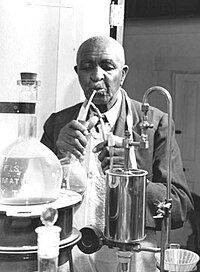
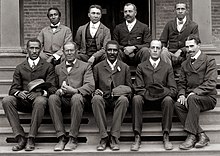
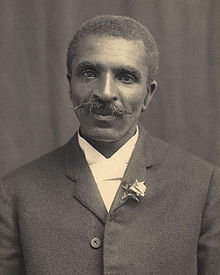
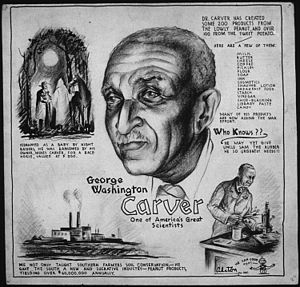
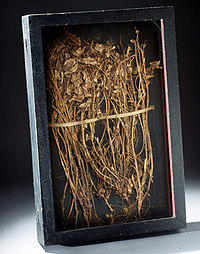
No comments:
Post a Comment